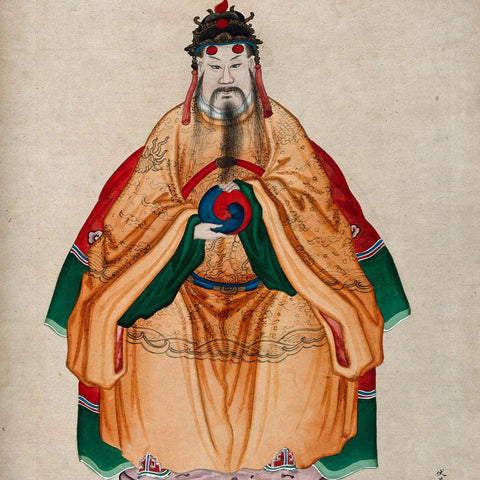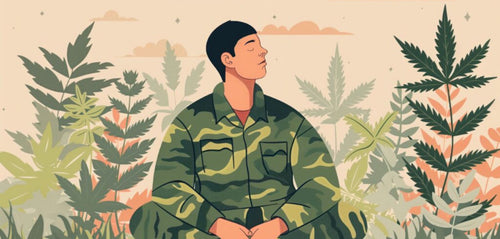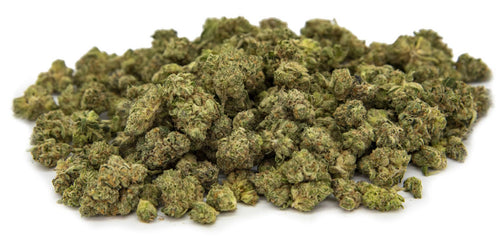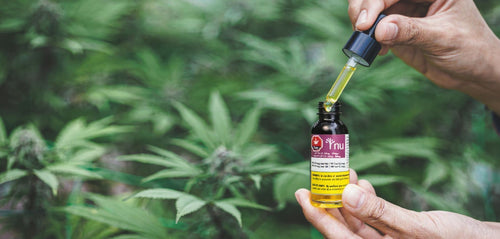#7: The History of Cannabis: From Ancient Civilizations to Modern-Day
#7: The History of Cannabis: From Ancient Civilizations to Modern-Day
Cannabis has a long and complicated history, spanning thousands of years and crossing cultures around the world. It was used in ancient times for its purported medicinal properties, and mentioned in early texts and religious scriptures as far back as 2,700 BCE. Revered for its utility in everything from rope-making to medicine, cannabis was an integral part of daily life in many cultures.
In more recent history, cannabis was widely used in the West during the 19th century for a variety of conditions, including pain relief, anxiety, and appetite stimulation. However, its use became increasingly demonized in the early 20th century due to its purported links to crime and violence. This culminated in its criminalization in most Western countries by the mid-20th century.
Despite its controversial status, cannabis has made a comeback in recent years. In many Western countries, its use is now decriminalized or even legalized, and a growing body of scientific evidence has begun to reveal the potential therapeutic benefits of cannabis. And as attitudes towards cannabis continue to change, its history will likely continue to be written. In this article, we will explore the rich history of cannabis, from its early use in ancient civilizations to its social and legal status in the modern day.
8000 BCE - The first archaeological evidence of cannabis use
The first archaeological evidence of cannabis use dates back to the early Neolithic period in China. It is thought that cannabis was introduced to China from Central Asia, where it was grown agriculturally for its hemp fibers, which were used to make clothing and ropes. This suggests that cannabis was one of the first crops to be domesticated by humans.
2900 BCE - The first mention of cannabis in written texts

In 2900 BCE, Emperor Fu Hsi, one of the earliest Chinese rulers, was said to have discovered the usefulness of cannabis. He noted that it could be used to make rope and paper, as well as for its medicinal properties. This is thought to be the first mention of the therapeutic potential of cannabis in written texts.
2000 BCE - The arrival of cannabis in India
Cannabis is believed to have been brought to India by Central Asian nomadic tribes around 2000 BCE. The plant was known as “bhang” in India and was used for religious purposes, as an intoxicant, and in Ayurvedic medicine. It was also used as a currency and was traded for goods such as cloth and spices. In the Atharva Veda, a Hindu scripture written in 1500 BCE, cannabis is referred to as a “healing drug” and considered one of the five most sacred plants on Earth.
1550 BCE - The ancient Egyptians and cannabis
Ebers Papyrus, an ancient Egyptian medical text dating back to 1550 BCE, mentions the use of cannabis for treating a variety of conditions such as inflammation and pain. It is also thought that cannabis was used in ancient Egyptian funerary rites, as its seeds and pollen were found in the tomb of Pharaoh Ramesses II, who died in 1213 BCE.
1500 BCE - Cannabis in Mesopotamia and Persia

Cannabis is thought to have arrived in Mesopotamia and Persia (modern-day Iran) around 1500 BCE from India. The Assyrians, who ruled Mesopotamia at the time, used cannabis for treating malaria and headaches. The plant was also used as an intoxicant and for religious purposes. In Persia, cannabis was known as "qunabu" and was used for a variety of purposes, including as a pain reliever, an anti- inflammatory, and an anticonvulsant.
450 BCE - Cannabis spreads to ancient Greece
Cannabis was introduced to ancient Greece around 450 BCE by the Scythians, a nomadic people from Central Asia. It was known as “kanabos” and was adopted for use in both medicine and recreation. Herodotus, a Greek historian, wrote about the Scythians using cannabis in his book The Histories, which was written in 450 BCE. He described how the Scythians would throw cannabis seeds on red-hot stones to inhale the resulting smoke.
70 - Cannabis reaches ancient Rome
In 70 CE, the Roman author Pliny the Elder wrote about the medical use of cannabis in his book Naturalis Historia. He described how the plant could be used to treat many conditions, including pain, swelling, and burns. Emperor Nero's physician Dioscorides also wrote about the medical use of cannabis in his book De Materia Medica, which was published in 77 CE. This text became a standard reference for pharmacists and herbalists for centuries.
900s - Cannabis emerges in England

The first recorded use of cannabis in England was in the early 900s at an old Viking settlement in Yorkshire. The Vikings had brought the plant with them from Scandinavia, where it was known as “hamp”. Cannabis was used for making rope and sails, and its seeds were used as food. Hemp became an important crop in England and was even mentioned in the Domesday Book, a record of land ownership compiled in 1086 CE.
1400s - The arrival of Cannabis in America
Cannabis is believed to have arrived in America with Christopher Columbus in the late 1400s. It is thought that Columbus brought the plant to the island of Hispaniola (present-day Haiti and the Dominican Republic), where it was used for making rope and sails. This led to cultivation of the plant in other parts of the Americas, including Mexico, Brazil, and Argentina.
1600s - Cannabis emerges in North America
Cannabis began to gain popularity in North America in the 1600s. It was introduced to the Jamestown colony by English settlers in 1611 and was used for making hemp rope and cloth. In 1619, the Virginia Assembly passed a law requiring every farmer to grow hemp. By the early 1700s, hemp was being grown in every colony in America.
The 1800s - Approved for medical use

The medical use of cannabis began in America in the early 1800s. The first recorded use was by Dr. William O’Shaughnessy, a medical doctor from Ireland who had studied in India. He published a paper in 1839 describing how cannabis could be used to treat various conditions, including pain and muscle spasms. Cannabis was added to the U.S. Pharmacopeia, a list of approved medications, in 1850.
1937 - The Marijuana Tax Act
In 1937, Franklin D. Roosevelt signed the Marijuana Tax Act into law, which effectively criminalized the plant in the United States. Before this, cannabis had been widely used as a medical treatment. The reason for the criminalization of cannabis is not clear, but it is thought to be due to a combination of factors, including racism, fear-mongering, and misinformation.
1960's - The counterculture movement
In the 1960s, there was a resurgence of interest in the medical and recreational use of cannabis. This was largely due to the counterculture movement, which saw young people challenging traditional values and experimenting with drug use. Cannabis was seen as a symbol of rebellion and was used by many people, including musicians and artists, as a way to express their individuality.
1970's - The War on Drugs

In 1971, the United States government, led by President Richard Nixon, declared a “war on drugs”. With cannabis being one of the most widely used illicit drugs, it became a target of this campaign. In 1970, the Controlled Substances Act was passed, which classified cannabis as a Schedule I drug, meaning it was considered to have a high potential for abuse and no accepted medical use. This classification has remained unchanged since then.
1996 - The passage of Proposition 215
In 1996, California became the first state to legalize medical cannabis with the passage of Proposition 215. Patients with a doctor’s recommendation were able to possess and use cannabis for various medical conditions. This was a major turning point in the fight for cannabis legalization and started a domino effect that would lead to the legalization of medical cannabis in many other states.
2012 - Colorado and Washington legalize recreational cannabis
In 2012, Colorado and Washington became the first states to legalize recreational cannabis. Under state law, adults 21 and over were able to purchase, consume, and grow cannabis for personal use. This was seen as a major victory for the cannabis legalization movement and set the stage for other states to follow suit.
2013 - Uruguay legalizes cannabis

In 2013, Uruguay took the bold first step of legalizing cannabis for all adults. The country created a regulatory framework that allowed for the cultivation, sale, and consumption of cannabis. Uruguay’s decision to legalize cannabis was met with mixed reactions from the international community, but it has served as an example for other countries considering similar measures.
2018 - Canada legalizes recreational cannabis
In October 2018, Canada became the second country to legalize recreational cannabis. Canada had previously legalized medical cannabis in 2001. The legalization of recreational cannabis was a major milestone for the global cannabis industry and was seen as a sign of changing attitudes towards the plant.
2018 - The passage of the Farm Bill
In December 2018, the U.S. Congress passed the Farm Bill, which legalized hemp – a type of cannabis with low levels of THC. This significant development made it possible for farmers to grow and sell hemp products, including CBD oil. The passage of the Farm Bill was a major victory for the cannabis industry and helped to further normalize the plant in the eyes of the general public.
2019 - The United Nations reclassifies cannabis

In 2019, the United Nations Commission on Narcotic Drugs removed cannabis from its list of dangerous drugs. Since 1961, cannabis had been classified as a Schedule I drug, alongside drugs like heroin and LSD. This reclassification was a significant development as it signaled a changing international attitude towards cannabis.
Present day - More countries legalize cannabis
In the years following the UN’s reclassification of cannabis, several countries have taken steps to legalize the drug. Thailand became the first country in Southeast Asia to legalize medical cannabis in 2019. Mexico followed suit in 2021, and South Africa became the first African country to legalize recreational cannabis in 2022.
On a final note
The history of cannabis is long and complex, spanning centuries and continents. Cannabis has been used for both medical and recreational purposes by cultures all over the world. Unfortunately, the prohibition of cannabis in the early 20th century marked a major turning point in its history, and it took many decades of activism to slowly roll back these laws.
As we look back at how millions of citizens around the globe fought for cannabis legalization, the victims of the war on drugs, and the countries that have taken bold steps to legalize cannabis, we can reflect on how far we’ve come – and how much further we still have to go. The history of cannabis is being written every day, and as more countries take steps toward legalization, its future looks brighter than ever.
Back to all posts









